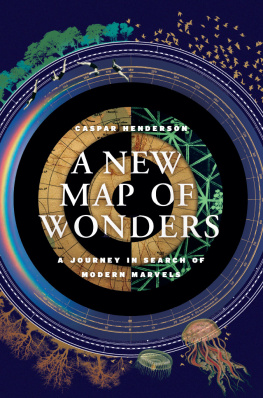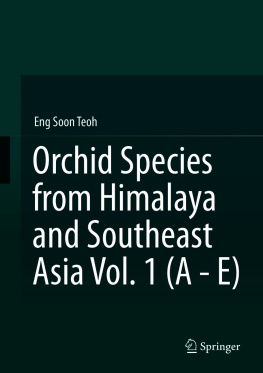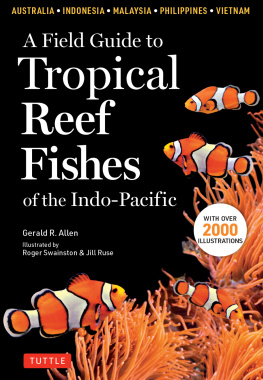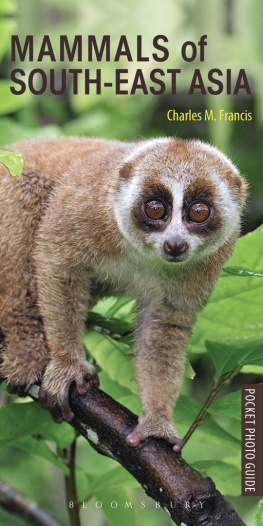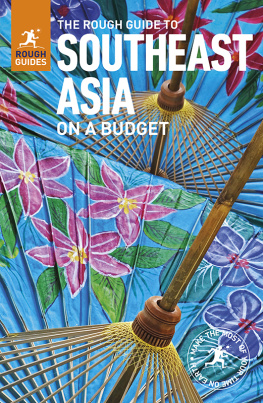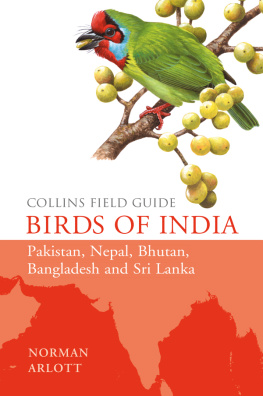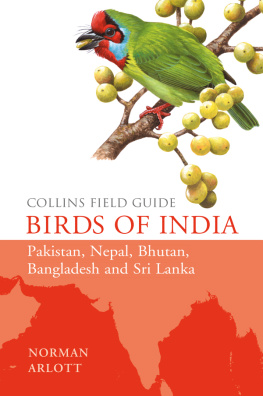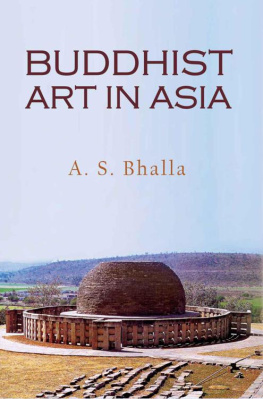Palms of Southern Asia
PRINCETON FIELD GUIDES
Rooted in field experience and scientific study, Princetons guides to animals and plants are the authority for professional scientists and amateur naturalists alike. Princeton Field Guides present this information in a compact format carefully designed for easy use in the field. The guides illustrate every species in color and provide detailed information on identification, distribution, and biology.
Albatrosses, Petrels, and Shearwaters of the World, by Derek Onley and Paul Scofield
Birds of Africa South of the Sahara, by Ian Sinclair and Peter Ryan
Birds of Australia, 7th Edition, by Ken Simpson and Nicolas Day
Birds of Chile, by Alvaro Jaramillo
Birds of the Dominican Republic and Haiti, by Steven Latta, Christopher Rimmer, Allan Keith, James Wiley, Herbert Raffaele, Kent McFarland, and Eladio Fernandez
Birds of East Africa: Kenya, Tanzania, Uganda, Rwanda, and Burundi, by Terry Stevenson and John Fanshawe
Birds of Europe, by Killian Mullarney, Lars Svensson, Dan Zetterstrm, and Peter J. Grant
Birds of India, Pakistan, Nepal, Bangladesh, Bhutan, Sri Lanka, and the Maldives, by Richard Grimmett, Carol Inskipp, and Tim Inskipp
Birds of Kenya and Northern Tanzania: Field Guide Edition, by Dale A. Zimmerman, Donald A. Turner, and David J. Pearson
Birds of the Middle East, by R. F. Porter, S. Christensen, and P. Schiermacker-Hansen
Birds of Nepal, by Richard Grimmett, Carol Inskipp, and Tim Inskipp
Birds of Northern India, by Richard Grimmett and Tim Inskipp
Birds of Peru, by Thomas S. Schulenberg, Douglas F. Stotz, Daniel F. Lane, John P. ONeill, and Theodore A. Parker III
Birds of the Seychelles, by Adrian Skerrett and Ian Bullock
Birds of Southeast Asia, by Craig Robson
Birds of Southern Africa, by Ian Sinclair, Phil Hockey, and Warwick Tarboton
Birds of Thailand, by Craig Robson
Birds of the West Indies, by Herbert Raffaele, James Wiley, Orlando Garrido, Allan Keith, and Janis Raffaele
Birds of Western Africa, by Nik Borrow and Ron Demey
Butterflies of Europe, by Tom Tolman and Richard Lewington
Caterpillars of Eastern North America: A Guide to Identification and Natural History, by David L. Wagner
Coral Reef Fishes, by Ewald Lieske and Robert Meyers
Dragonflies and Damselflies of the West, by Dennis Paulson
Mammals of Europe, by David W. Macdonald and Priscilla Barrett
Mammals of North America, by Roland W. Kays and Don E. Wilson
Marine Mammals of the North Atlantic, by Carl Christian Kinze
Minerals of the World, by Ole Johnsen
Nests, Eggs, and Nestlings of North American Birds, Second Edition, by Paul J. Baicich and Colin J. O. Harrison
Palms of Southern Asia, by Andrew Henderson
Raptors of the World, by James Ferguson-Lees and David A. Christie
Reptiles and Amphibians of Europe, by E. Nicholas Arnold
Reptiles of Australia, by Steve Wilson and Gerry Swan
Sharks of the World, by Leonard Compagno, Marc Dando, and Sarah Fowler
Shorebirds of North America, Europe, and Asia: A Guide to Field Identification, by Stephen Message and Don Taylor
Stars and Planets: The Most Complete Guide to the Stars, Planets, Galaxies, and the Solar System (Fully Revised and Expanded Edition), by Ian Ridpath and Wil Tirion
Whales, Dolphins, and Other Marine Mammals of the World, by Hadoram Shirihai and Brett Jarrett
ANDREW HENDERSON
Palms of Southern Asia

THE NEW YORK BOTANICAL GARDEN
PRINCETON UNIVERSITY PRESS PRINCETON AND OXFORD
Copyright 2009 by the New York Botanical Garden
Requests for permission to reproduce material from this work should be sent to Permissions, Princeton University Press Published by Princeton University Press, 41 William Street, Princeton, New Jersey 08540
In the United Kingdom: Princeton University Press, 6 Oxford Street, Woodstock, Oxfordshire OX20 ITW and The New York Botanical Garden, Bronx River Parkway at Fordham Road, Bronx, New York 10458
All Rights Reserved
Library of Congress Cataloging-in-Publication Data
Henderson, Andrew, 1950
Palms of southern Asia / Andrew Henderson.
p. cm. (Princeton field guides)
Includes bibliographical references and index.
ISBN 978-0-691-13449-9 (hardback: alk. paper) 1. PalmsSouth AsiaIdentification.
I. Title. II. Series.
QK495.P17H445 2009
584.5095dc22
2008030892
British Library Cataloging-in-Publication Data is available
This book has been composed in Cheltenham Light and Gill Sans
Printed on acid- free paper.
nathist.princeton.edu
Printed in the United States of America
10 9 8 7 6 5 4 3 2 1
For Flor, Lidia, and Alfred
Contents
Palm Regions in Southern Asia
Layout of the Book
Classification of Southern Asian Palms
Morphology of Palms
Key to the Genera of Palms in Southern Asia
1. Areca
2. Arenga
3. Bentinckia
4. Borassodendron
5. Borassus
6. Calamus
7. Caryota
8. Ceratolobus
9. Chuniophoenix
10. Clinostigma
11. Cocos
12. Corypha
13. Cyrtostachys
14. Daemonorops
15. Eleiodoxa
16. Eugeissona
17. Guihaia
18. Hyphaene
19. Iguanura
20. Johannesteijsmannia
21. Kerriodoxa
22. Korthalsia 116
23. Licuala
24. Livistona
25. Loxococcus
26. Maxburretia
27. Myrialepis
28. Nannorrhops
29. Nenga
30. Nypa
31. Oncosperma
32. Orania
33. Phoenix
34. Pholidocarpus
35. Pinanga
36. Plectocomia
37. Plectocomiopsis
38. Rhapis
39. Rhopaloblaste
40. Salacca
41. Satakentia
42. Trachycarpus
43. Wallichia 169
Foreword
From the deserts of Afghanistan to the limestone hills of southern China and the rain forests of Peninsular Thailand, the natural vegetation of Southern Asia, the area covered by this exciting new book, includes some of the most interesting and unusual palms. For some fortunate areas within the region, taxonomic accounts that include palms are already in existence, but many of these were published in the last century and are already very out of date as far as taxonomy or nomenclature are concerned. Several suffer from the chauvinism of local botany, where apparently distinctive species were described without looking over the border to the next country to see what had already been described from there.
Andrew Henderson provides an amazing synopsis of the entire palm flora of this vast region. Not only does the book account for all names that have been published for palms for this region (and includes several important corrections to long-accepted nomenclature) but it includes many species that have only recently been described, based on the authors collaborative fieldwork with his local counterparts in Asia. Nowhere is this more evident than in Vietnam, where the author has had several trips, uncovering astonishing palm diversity, a diversity hardly imagined a decade ago. The author has reviewed existing literature and has made detailed herbarium studies that have resulted in new synonymy and the uncovering of previously unrecognized species. His lucid account is easily accessible, not just to the experienced botanist.
Next page

